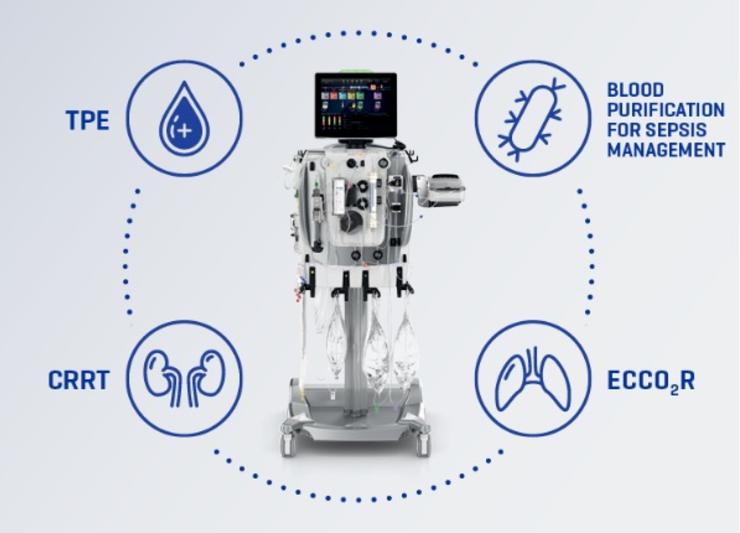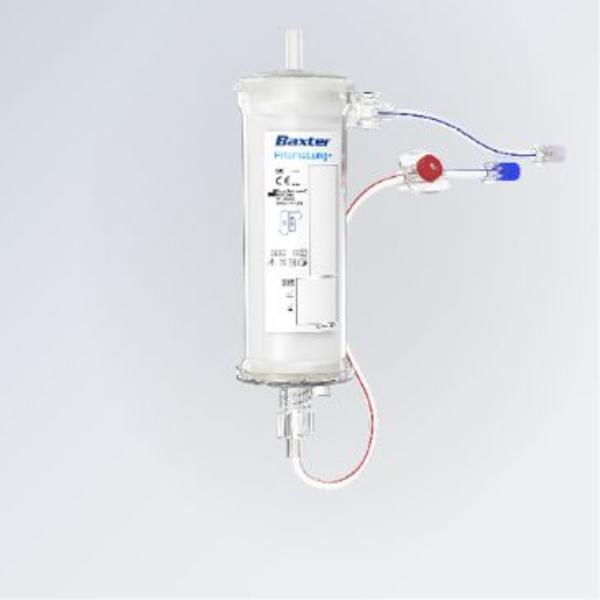Combining Multi-organ Support Therapies

Optimizing efficiency and care in the ICU
Multiple organ dysfunction can affect ~25% of critically ill patients,1 contributing to ~50% of ICU deaths.2,3
COVID-19 can result in multiorgan dysfunction4,5 and patients with COVID-19 in the ICU commonly require support for different organ systems.5
AKI has been reported in ~30% of patients hospitalized with COVID-19.6 AKI complicated the course of ~45% of patients requiring ICU care, and 1 in 5 patients admitted to the ICU received RRT.6

COVID-19 exacerbated a pre-existing trend of operational and financial pressures
The changes made by hospitals in response to the COVID-19 pandemic can become new standards for improved patient care.7
- The broad range of complex clinical conditions managed in the ICU, alongside a patient population with highly diverse characteristics and comorbidities, underscores the need to deliver individualized treatment for improved outcomes.8,9
- As the effects of the pandemic continue and long-term complications emerge, the need for care processes that balance clinical, operational, and financial demands will continue.

Expanding treatment possibilities
PrisMax 2, PrisMax and Prismaflex expand treatment possibilities for multi-organ failure patients, helping clinicians to provide quality care and reducing staff burden while making the most of your capital expenditure:
- The toll of COVID-19 on multiple organs, including heart, lung and kidney damage, is expected to have long-term effects that will likely require costly care.14
- Financial volatility for hospitals is being driven by greater numbers of high acuity patients who require longer hospital stays, more supplies and staff time, and more resources overall.15-17
- Staff training time and costs may be compounded by the use of multiple devices.18
Related Products
IMPORTANT SAFETY INFORMATION
The PrisMax control unit is intended for:
- Continuous Renal Replacement Therapy (CRRT) for patients with acute renal failure and/or fluid overload.
- Therapeutic Plasma Exchange (TPE) therapy for patients with diseases where removal of plasma components is indicated.
- Hemoperfusion (HP) for patients with conditions where immediate removal of substances by adsorption is indicated.
- Extracorporeal CO₂ Removal (ECCO₂R) for patients with conditions where extracorporeal elimination of carbon dioxide is indicated.
The Prismaflex control unit is intended for:
- Continuous Renal Replacement Therapy for patients with acute renal failure and/or fluid overload.
- Therapeutic Plasma Exchange Therapy for patients with diseases where removal of plasma components is indicated.
- Hemoperfusion for patients with conditions where immediate removal of substances by adsorption is indicated.
- Hemopurification for patients with conditions where extracorporeal elimination of carbon dioxide is indicated.
For safe and proper use of the products mentioned herein, please refer to the Operator’s Manual or Instructions for Use.
![]()
![]()





